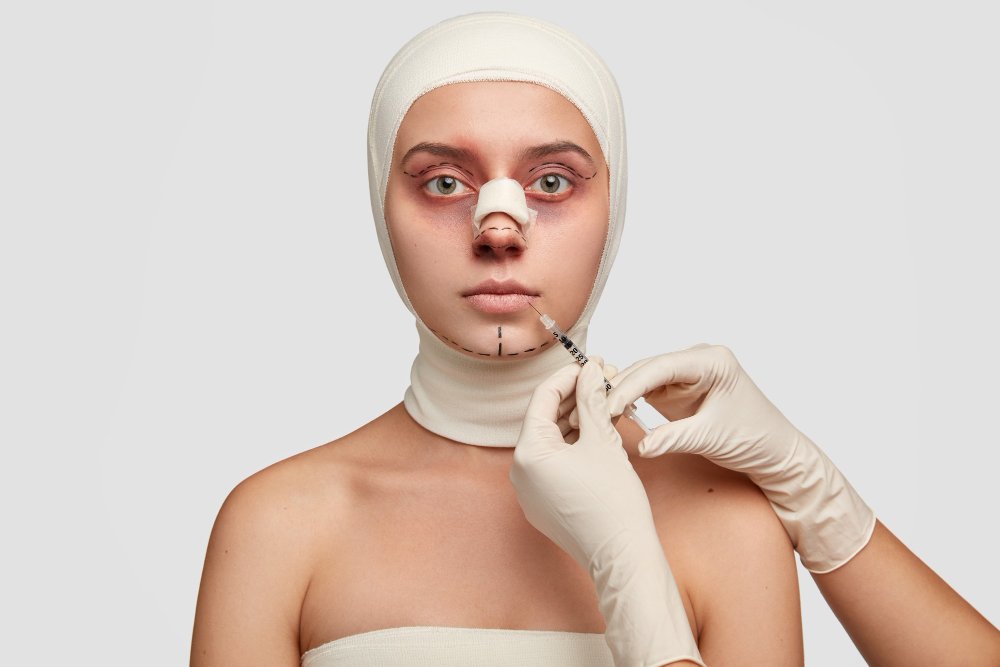Treatment Overview
The Vertical Vector Deep Plane Facelift is a refined version of the deep plane facelift that repositions the face in an upward and vertical direction, rather than pulling tissues horizontally. By lifting the deeper facial ligaments and SMAS layer vertically, this advanced technique restores youthful cheek volume, smooths deep folds, and improves jawline definition while avoiding the unnatural “pulled back” look sometimes seen in traditional facelifts.
Purpose & Benefits
The vertical vector approach is especially effective for addressing midface and lower face sagging. Benefits include:
- Lifting cheeks vertically for a naturally youthful contour.
- Softening nasolabial folds and marionette lines.
- Improving jawline definition and reducing jowls.
- Creating a smoother transition between the eyelid and cheek.
- Achieving subtle, elegant results without visible tension on the skin.
Ideal Candidates
This procedure is recommended for individuals in their 40s to 60s who are experiencing midface descent, loss of cheek volume, and jawline sagging. It is especially suitable for patients who:
- Want a natural “refreshed” look without drastic changes.
- Have concerns about flattened cheeks or deep folds.
- May have tried less invasive treatments (fillers, threads) but need longer-lasting correction.
Possible Risks & Complications
Risks include swelling, bruising, numbness, infection, hematoma, or temporary nerve weakness. Since the vertical vector technique involves repositioning deep tissues, there is a small risk of asymmetry, but serious complications are rare with an experienced Korean surgeon.
Surgical Techniques Used
The Vertical Vector Deep Plane Facelift works by releasing retaining ligaments in the face and repositioning tissues upward and vertically. Unlike traditional lifts that pull sideways, this method restores the face’s youthful proportions by lifting cheeks, midface, and jawline along a natural vertical axis. In Korea, surgeons often enhance this lift with fat grafting, under-eye rejuvenation, or regenerative therapies, achieving harmonious and long-lasting results.
Recovery & Aftercare
Most patients experience swelling and bruising for 2–3 weeks, with social recovery typically around 3 weeks. Full results appear after 2–3 months once tissues settle. Korean clinics provide advanced recovery programs including anti-swelling injections, LED light therapy, and scar management treatments to speed up healing and optimize outcomes.
Results & Longevity
Results from the Vertical Vector Deep Plane Facelift typically last 10–15 years, thanks to the deep repositioning of ligaments and tissues. Patients enjoy lifted cheeks, softened folds, a youthful midface, and a defined jawline that ages gracefully without the “windswept” look.
Treatment Process in Korea
Korea is a global leader in facelift innovation, and the vertical vector technique is especially popular due to its subtle, natural results. Korean surgeons are highly skilled at combining this advanced lift with complementary procedures like fat grafting, stem-cell therapy, and laser skin rejuvenation to further enhance the outcome. Korea is also one of the most trusted destinations for international patients because of its precision surgical methods, scar-minimizing techniques, English-speaking coordinators, and luxury recovery facilities.
Cost Range
The cost of a Vertical Vector Deep Plane Facelift in Korea typically ranges from USD $12,000 to $25,000, depending on the clinic, surgeon expertise, and whether additional procedures (neck lift, fat grafting, or eyelid surgery) are performed. Prices are often more competitive than in the US or Europe, while offering world-class surgical standards.
Popular Clinics in Korea
Well-known clinics in Seoul specializing in vertical vector deep plane facelifts include JW Plastic Surgery, Banobagi Plastic Surgery, ID Hospital, and View Plastic Surgery. These centers are internationally recognized for their facelift expertise, natural-looking results, and comprehensive aftercare tailored to international patients




